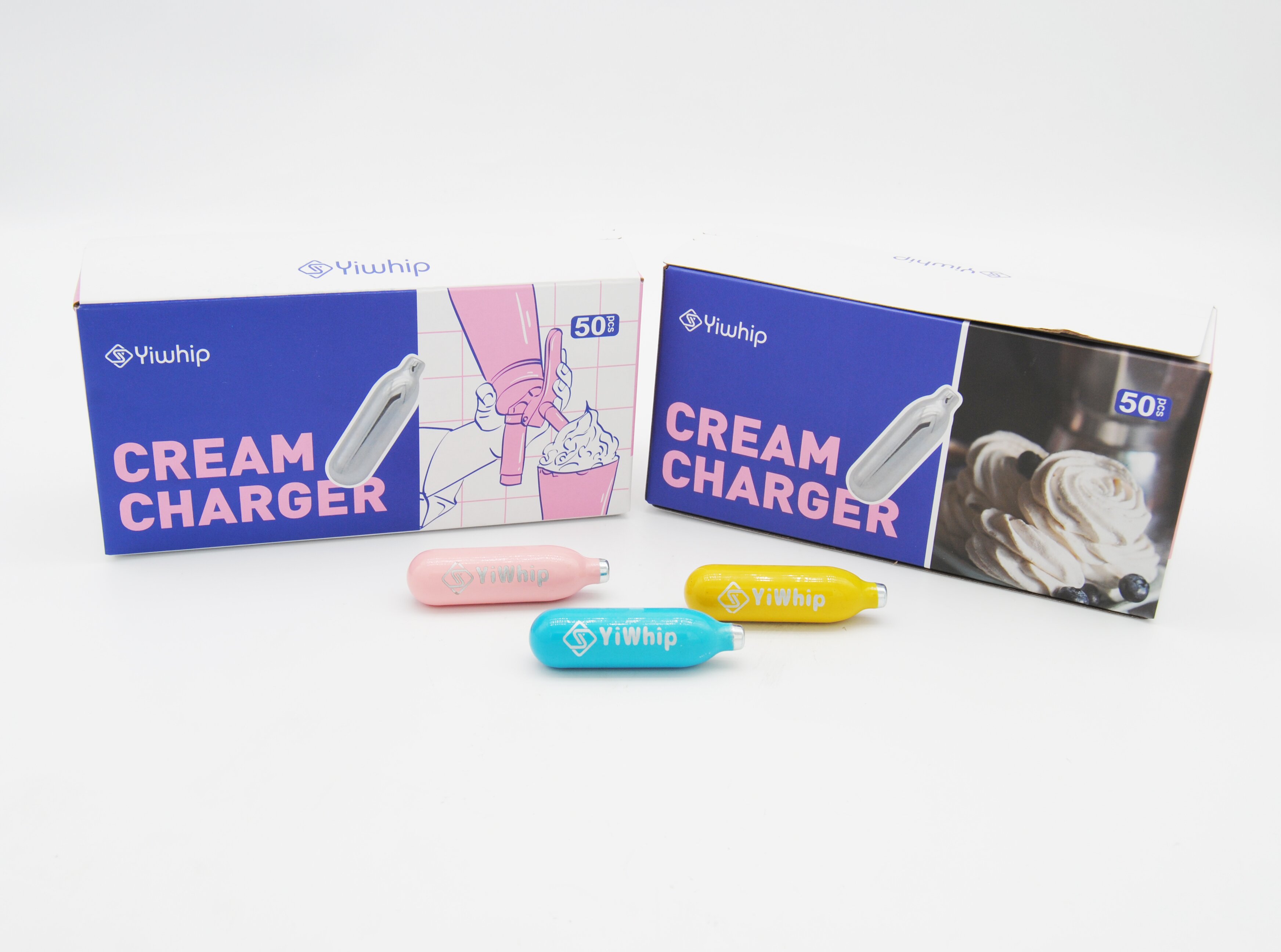In the world of culinary arts and gastronomy, a number of ingredients have moved beyond the traditional realm and entered the territory of modern molecular cuisine. Among these innovative tools lies an often-underestimated kitchen accessory: the whipped cream charger.
You know it — that little silver cartridge tucked away at the back of restaurant equipment drawers, gathering dust until someone realizes just how vital it can be. At first glance, it might not appear extraordinary. However, once we peer inside its deceptively small form, we uncover the chemistry, creativity, and precision that make this humble device far more than just a quick-fix for whipped cream. Let’s break it all down.
The Basics: What Exactly Is a Whipped Cream Charger?
A whipped cream charger, otherwise known as a N2O cream whipper, is a disposable cylinder filled with nitrous oxide (N₂O) gas used primarily in whipping cream. When inserted into a handheld cream dispenser (the larger canister-style gadget behind every café latte froth), it rapidly pressurizes the system and transforms liquid cream into light, fluffy goodness.
Nitrous Oxide, commonly known for recreational use as 'laughing gas', plays a serious scientific role here, enabling rapid texture changes and foam stabilization.
But wait — why does this even matter in kitchens and home cooking? And what science lurks behind the puffiness of our favorite topping? That's what we’re exploring next.
Nitrous Oxide Demystified: Why Not Just Use CO₂ or Compressed Air?
The unique behavior of nitrous oxide compared to other gases like carbon dioxide or plain compressed air lies at the heart of cream churning magic. So what gives N₂O such an edge in foaming dairy and desserts? The secret lies in its solubility characteristics and inertness during culinary use.
Key Properties of Nitrous Oxide:
- Unlike carbon dioxide, nitrous oxide has low reactivity with dairy fats, preventing any unwanted flavor change while still providing aeration.
- Due to its mild solubility at high pressure, it dissolves evenly in the cream mixture, producing a consistent, airy structure without over-agitating.
- N₂O expands upon release from compression — this means each press triggers a tiny burst explosion resulting in instant aerated textures you’d need much longer mechanical stirring for.
Behind the Whistle: How Does the Dispenser Turn Liquid Into Light Foam?
The real magic begins when the nitrous oxide meets fat-laced liquid cream inside a specialized dispensing chamber.
When a fresh charger gets inserted into the siphon canister, internal sealing activates a pin-valve. That causes the thin membrane inside the capsule to rupture under force, allowing high-purity nitrous oxide to surge inside the dispenser body.
- Cream is loaded into the main stainless chamber of the dispenser.
- Whipped cream charger introduces pressurized nitrous oxide.
- N₂O dissolves within the lipid-water emulsion and becomes highly energized.
- Squeeze of nozzle releases built-up gaseous pressure through controlled decompression zones within the device head.
- This expansion whips dissolved gas and liquid fats outward, instantly aerating everything.
Beyond the Bar: Surprising Applications Beyond Basic Dessert Making
Although most commonly associated with café-style desserts and barista-style lattes, professional chefs worldwide have discovered inventive applications for this powerful pairing: whipping syringes powered by chargers.
We’ve seen mixologists using nitrous-infused creams to layer alcoholic mousses on top of dessert cocktails. We’ve observed Michelin-level pastry chefs injecting herb-forward savory foams atop smoked meat platters using custom nitrogen-infused variations.
Mother sauces thickened via micro-foaming, chilled herbal soups whipped mid-prep stage, or basted seafood served on aromatic air-whisped bases — all thanks to the power packed into that 12-gram metal capsule, quietly waiting to deliver delight.
Sustainability in Focus: Safety, Eco-Impacts, and Responsible Usage Practices
Luckily for eco-concerns and budget-watchers alike, modern cream chargers come manufactured with recyclable steel and designed under international ISO safety standards to reduce atmospheric leakage.
Still, proper disposal of empty capsules remains paramount for minimizing greenhouse gas contribution, especially in environments prioritizing climate-conscious choices.
Besides the immediate carbon footprint, misuse of large volumes of N₂O outside approved kitchen applications poses significant health risks if inhaled improperly. Hobbyist users and small businesses must ensure clear signage around handling, age controls near point sales, and safe disposal instructions.
That being said — and provided they are used responsibly — these small power capsules offer unparalleled flexibility across fine dining and casual service sectors with minimal effort required per outcome. For example:
- Precise dosing prevents ingredient waste
- Rapid execution = less energy expenditure versus hand whisking or mechanical beating
- Compact transport & minimal shelfspace demand reduces distribution emissions compared to bulk refrigerated goods
What’s in Store? Innovations Shaping Next-Level Nitrogen Tech in Modern Kitchens
While the basic technology hasn't radically changed, today’s food engineers continuously work toward improving performance metrics. Think smart integration of charging cartridges in fully automated dessert systems in premium cafés or even modular kits designed specifically for amateur home chefs eager to play alongside pro-grade appliances without compromise on consistency or style.
Imagine walk-up vending machines delivering customized, ultra-aerated shakes — all driven from a pocket-sized cartridge. That's where innovation stands.
In terms of innovation trends we expect to take root soon:
| **Sustainability** | Refurbish programs for brass-based chargers and higher recyclability rates of spent canisters |
| **Technology Boost** | Embedded IoT sensors in newer chargers to indicate freshness, dosage accuracy, leak prevention checks, and more |
| **Multi-use Adaptation** | Capsule hybrids capable of switching between multiple foaming agents and even cold carbonatation protocols |
So while the past may suggest the charger is just about fast cream, tomorrow could paint a very dynamic picture indeed.
The Future Tastes Better — One Puff at a Time 🍧✨
To wrap it up, what began life as a clever hack for speed-flavored dessert assembly now proves its value well beyond whipped indulgence.
Nitrous oxide chargers stand poised not only as tools for creamy bliss but rather key enablers behind many signature moments found across today’s evolving gourmet landscapes. As tech improves and creative minds keep pushing boundaries — both sustainability-wise and application breadth — we should feel confident knowing one of the smallest tools in our culinary box continues shaping unforgettable flavors.
Quick Tips Before You Charge Away 🚀
- Never refill single-use N₂O chargers.
- Only use food-safe, ISO-certified brands designed for kitchen use — industrial varieties pose choking hazards if misused.
- Check your local guidelines concerning safe usage, sale age limits, or specific restrictions related to public health regulations regarding laughing gas consumption.
- Store chargers safely in temperature-controlled environments and keep them locked away if children access your preparation areas.
- If you're experimenting with homemade blends – always test viscosity and fat content first before deploying widely.
Here’s looking ahead to new recipes born not from lengthy prep routines but from quick squeezes that transform ingredients into unforgettable clouds.
Your palate’s evolution starts today – and the secret weapon behind each scoop isn’t some high-tech wand after all…just that silent whisper hissing from inside the cream-charger’s silver bullet shell 🛠💨

